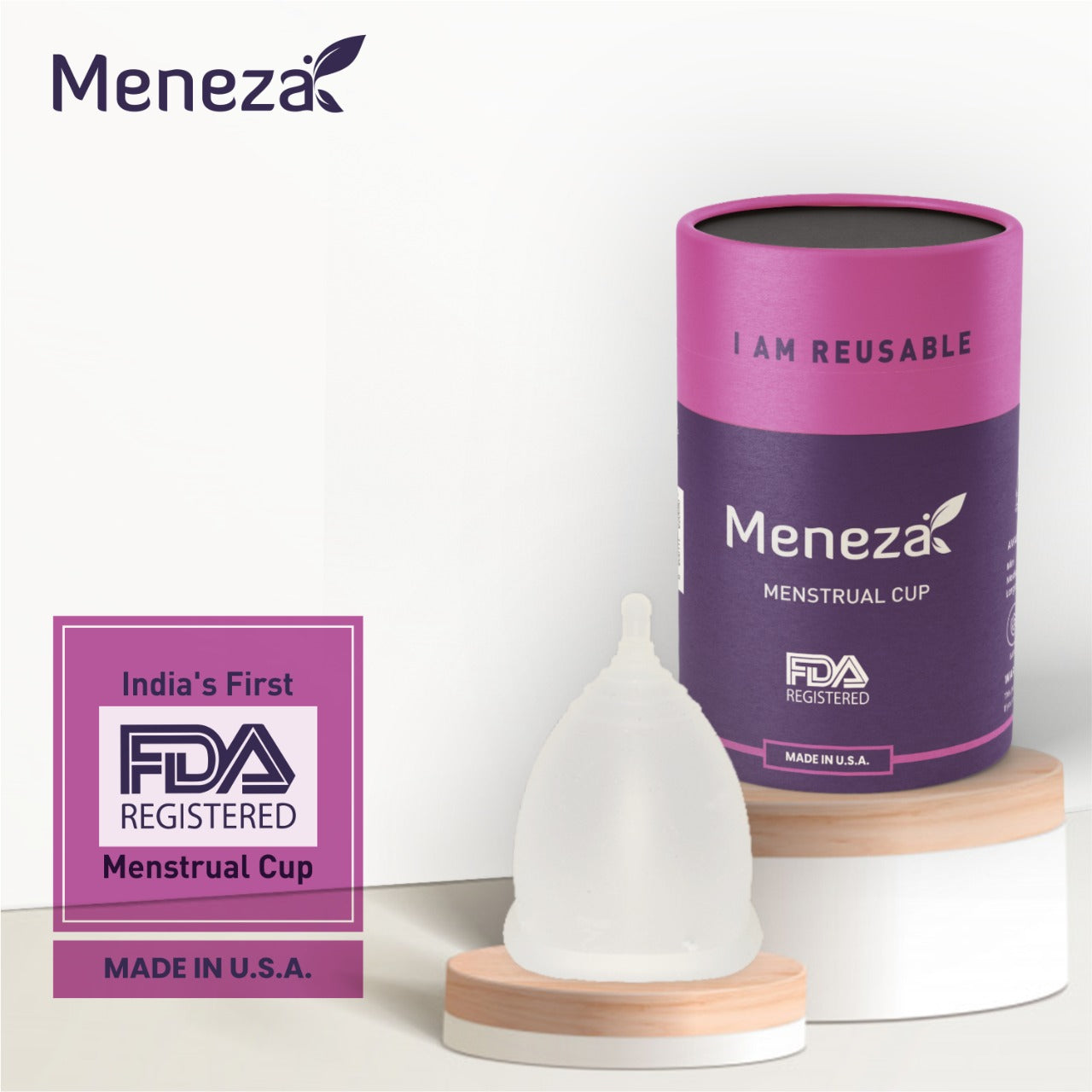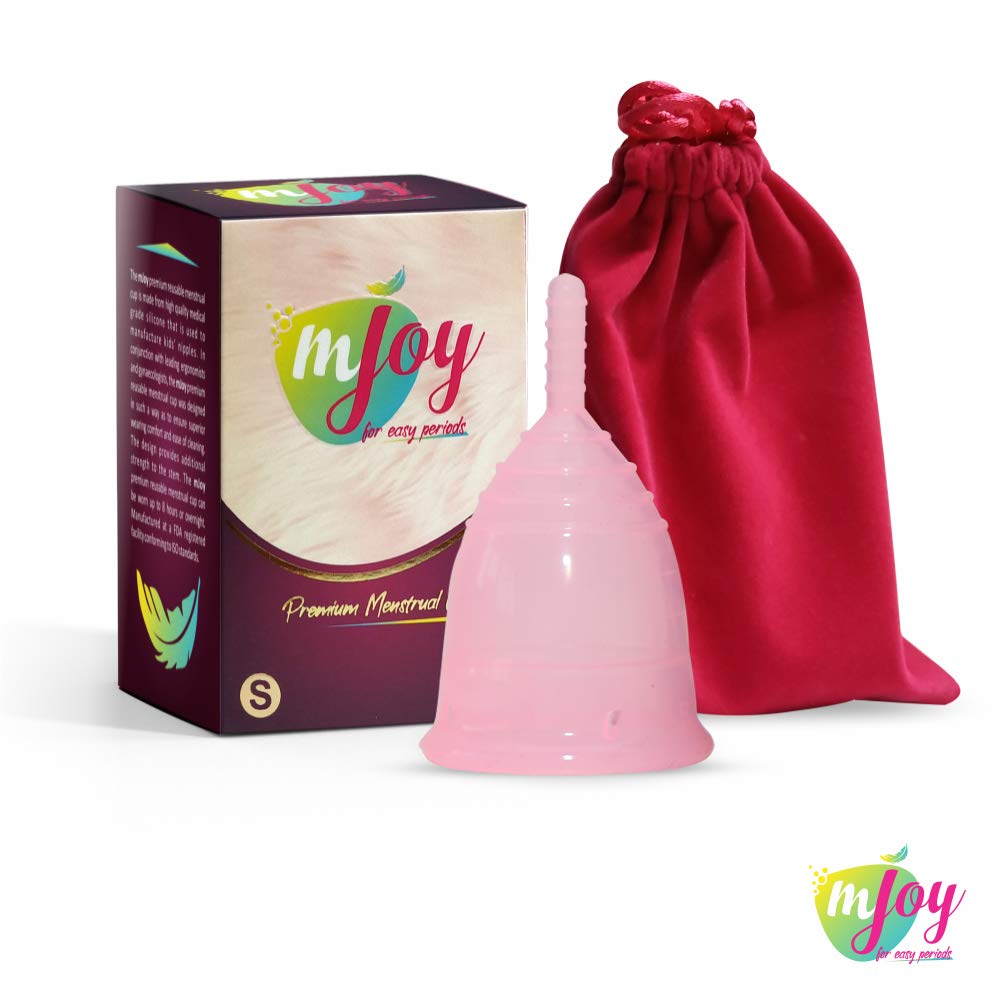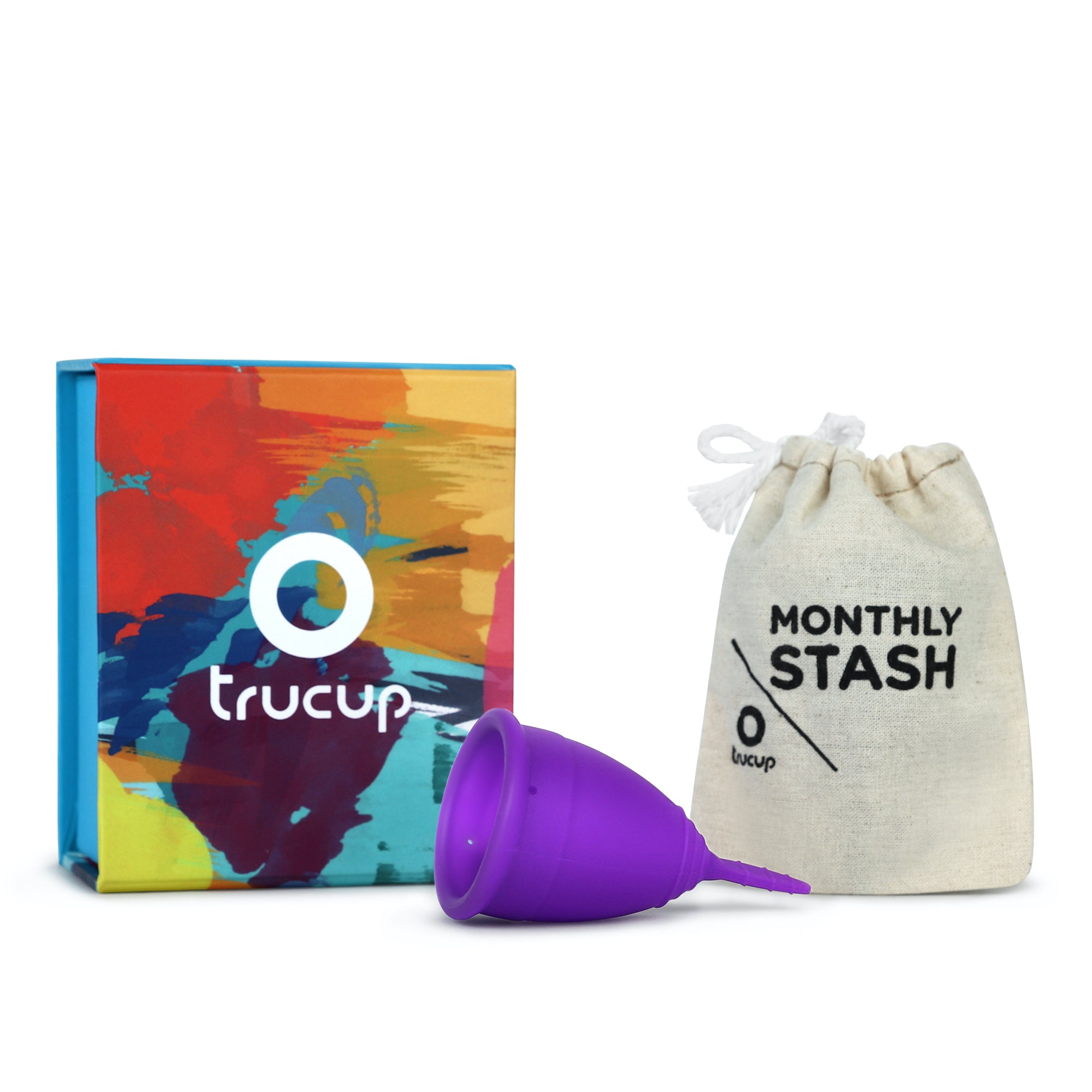Menstrual Cup: Everything about them
A menstrual cup or a period cup is a small, flexible, bell-shaped reusable cup made out of silicon mostly that women insert into their vagina to catch and collect period fluid.
What? How? Types Inserting Removing Cup Sizes Advantages Comparison Safety Comfort
What are Menstrual cups
Menstrual cups are made of medical-grade latex or silicone. The first usable commercial menstrual cup was patented in 1937 by Leona Chalmers. Earlier then menstrual cups were made out of rubber and later in the 80s out of latex. It was in 2001 only that the first silicon made cup was manufactured by UK-based Mooncup. You can find out more on the article below.
More about this
Related Products
How does a menstrual cup work?
A menstrual cup is folded and inserted inside a woman’s vagina after which it unfolds itself into its actual shape to create a vacuum seal against the cervix.
And this is how it stops the period blood flow out of a woman’s vagina by collecting it in the cup shape of it, the cup’s vacuum seal ensures that there’s no staining on a woman’s clothes. In some cases the user might need to twist and turn the cup inside while holding its stem to ensure a proper seal after it springs open.
More about this
Types of menstrual cups
Menstrual cups are generally made out of medical grade silicon these days, but there are manufacturers who produce menstrual cups out of TPE (thermoplastic elastomer), rubber and latex. Menstrual cups come in variety of shapes, sizes and colors, and even colorless ones. They are designed to last at least 1-5 years.
Most manufacturers are opting for producing colourless menstrual cups to ensure that the chemical in the colouring agents does not put the sensitive vaginal cavity at any risk. However the colouring used in them is reported to be safe and approved by the FDA.
More about this
How to insert a menstrual cup?
Using a menstrual cup might seem trickier at first but once you start using it, you get to know the way to do it. Before you start using the cup, it's important to understand how to insert the cup.
To insert the cup, fold the top of the cup and gently push it into the vagina, aiming it toward the lower back (as you would in the case of a tampon without an applicator). At this point in time, you may need some lubricant to ease the process. A water-based lubricant can be applied to the rim of the cup to ease the process.
While inserting, some people find it easier when they are squatting, some others prefer to be standing, some others prefer to raise one foot while doing so.
Once the rim of the cup is in, slowly continue to push the cup into the vagina until the entire cup and stem are inside. The cup once inside, you should rotate it so that it springs open and to provide an airtight seal, and stops from leaking. While rotating the cup, hold it by its base (not the stem) and turn it one full circle.
You likely would not feel your menstrual cup if it’s inserted correctly. Your movement and everyday activities should be comfortable without your cup falling out.
More about this
Removing a period cup
And to remove it after using it, a person can squat down slightly, so as to have a better-leveraged position to push the cup down. Use your forefinger and thumb, gently reach inside your vagina and grab the stem of the cup, carefully pulling it towards the ground. Gently pinch the base of the cup to break the suction, while keeping the cup upright (in order to avoid any spilling) and remove it from the vagina.
How to choose the right size cup?
With menstrual cups, there aren't any sizing standards. Most of the brands have two sizes. They are small, or A and regular or B. Size small is for women under the age of 30 and who haven't given birth yet. Size B is for women above the age of 30 and who have given birth. However, it is always necessary to find the correct size of your Crevice before purchasing a menstrual cup. You can measure it by reaching your finger into the vagina. You can compare the measurements with the size charts and go for a size shorter than your Crevice.
Advantages of using a menstrual cup
Menstrual cups are eco-friendly alternatives to tampons and sanitary pads. They fall into the category of reusable period products. They can stay long and offer overnight protections.
Some women may face some discomfort while using a menstrual cup for the first few times. We might need a few trials to hang on to insert and remove the cup. But in the long run, they can provide more comfort and rewrite your experience with periods. Though they can't cure menstrual pain, they can aid you to get through your periods with ease.
Menstrual cups can hold up to 30 milliliters of menstrual blood. It is significantly higher than the capacity of other sanitary products (which can hold 5 milliliters and need to be discarded after every use). There are a plethora of reasons menstrual cups are the best products for maintaining menstrual health.
- They don't cause any imbalance in our PH. It is because, unlike tampons, they collect blood and do not absorb it.
- They have airtight seals, which prevent unpleasant odor and reduce the chance of backflow.
- They are eco-friendly as they adhere to the 3Rs of sustainability (Reduce, Reuse, and Recycle).
- They can collect more blood. You don't have to think of emptying the cup for a maximum of eight hours.
More about this
Menstrual cups vs other period products
A menstrual cup when compared to other dominant period products which are mostly used, outstands them in many cases. A good period product can defined by a few parameters, and they are:
- It should be safe to use and not cause any harm to the vaginal flora.
- It could deal with the flow easily.
- It should be eco-friendly.
- It should be easy on the pocket.
- It should have no chemicals.
A menstrual cup fulfills all of these pointers to be an ideal choice for menstruating women.
More about this
How safe are menstrual cups?
Menstrual cups have been found safe to use when used as directed for using one. Till now no health risks have been found regarding using them.
The US Food and Drug Association recognises and approves the menstrual cup as a safe product.
However, people allergic to some components can switch between finding their right cup made-up of a different substance.
How to be comfortable with a menstrual cup?
When the first menstrual cup came out, women were reluctant on inserting a rubber cup into their vaginas, this raised concern over how should be comfortable with a menstrual cup. While myths and reluctance continue to haunt the product and menstruation, finding comfort with menstrual cups depends upon various factors such as the size of the cup, the way you fold it and its position.
While thinking about switching to menstrual cups, the first concern most women could have would be. Will it be comfortable? The answer to the question is tricky, as comfort is subjective, and everyone's state of being comfortable differs.
However if you’re following all of the instructions to use it properly and experimenting with your way to find out the way you’re most comfortable with then most women find comfort in using one and don’t even feel if it’s inside.
More about this
Related Products
Frequently Asked Questions
When does a menstrual cup leak?
When a cup is inserted incorrectly, or the cup might be full. Using the wrong size of a menstrual cup can also cause the same problem.
Would the cup get lost in the vagina?
No, a menstrual cup cannot get lost in the vagina.
How long should the cup be in the vagina?
It’s recommended that you cautiously take the cup out after a maximum of 12 hours and wash it. If you have a heavy flow consider washing after 6 hours.
When does a menstrual cup hurt?
It could be because of the long stem, the wrong size, or the way of folding the menstrual cup. It’s critical to choose the right cup. Just write to us and we’ll help you figure out the right cup for you.
Are menstrual cups healthy to use?
Yes, doctors have certified them to be a healthier alternative. However it is recommended that proper hygiene be maintained, and cups be cleaned regularly to avoid irritations. Comparatively they cause fewer infections than traditional pads.
Can menstrual cups cause infections?
If menstrual cups are not used in a hygienic way, it could cause infections. The bacteria in our hands might transfer into the menstrual cup. Clean your hands with warm water and soap before insertion and while taking out to avoid infections.
How much vaginal discharge can a cup hold?
An average person discharges about ~45 ML of blood in one cycle. A cup can hold between 25-30 ML of blood.
Would a menstrual cup stretch out the vagina?
No, once the cup is out the vaginal muscles retract to its original shape.
Is it possible to poop or pee while wearing a menstrual cup?
Yes, cups don’t cause problems with stool or urine discharge.
Is it okay to have sex with the cup inside?
While it’s completely safe to have sex during your periods, it is recommended to remove the cup while having penetrative intercourse.
Can I sleep with my cup in my vagina?
Yes. They are comfortable and would not impact your sleep or your sleeping posture.
How long does a menstrual cup last?
A menstrual cup is a one-time buy, and if taken care of after every use, they could last for upto 5-10 years.
Are menstrual cups cheap?
Compared to sanitary pads and tampons, no they aren't. But in the long run, menstrual cups are worth every penny, as they last for years.



